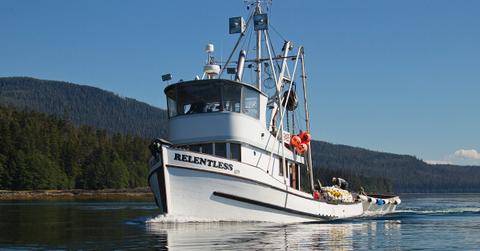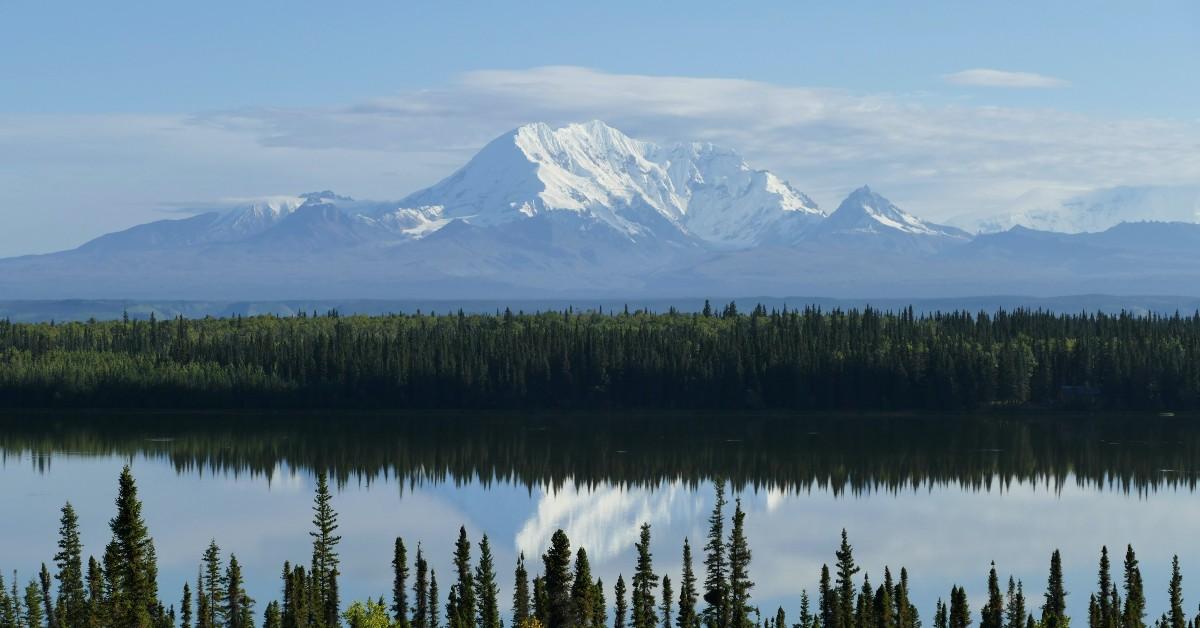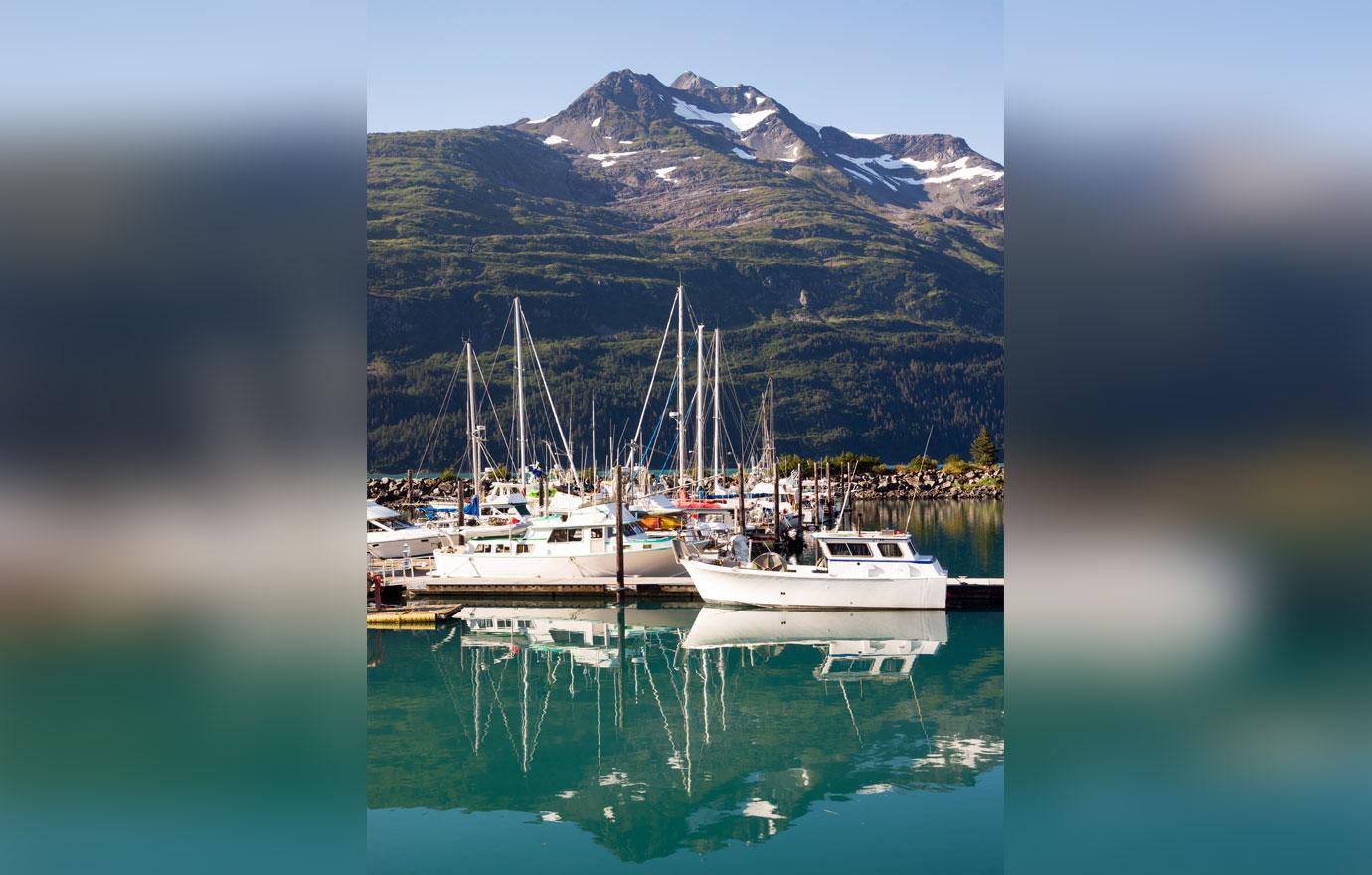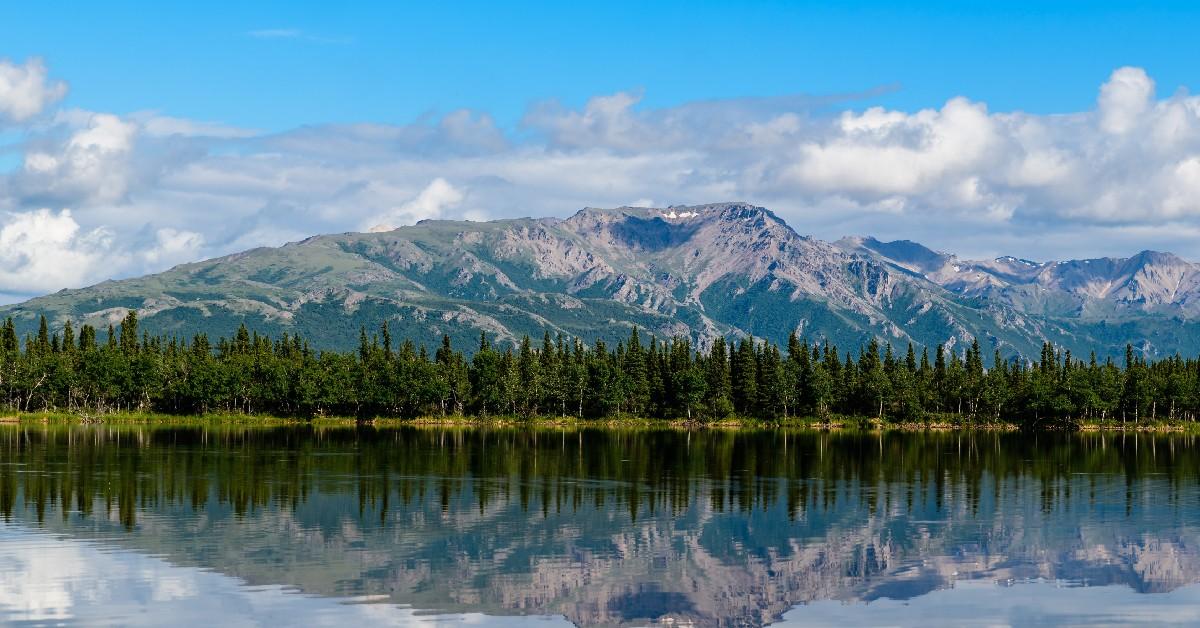Alaska's Deadly Mystery: Inside the Unsolved Mass Killing of 8 Found on Fishing Ship

It was the men who worked on a troller named “Casino” who first noticed the fire. Thick black smoke was rising high against the misty skies of a crisp fall afternoon.
A "Casino" crewmember alerted authorities in nearby Craig, Alaska, then rode their fishing boat less than a mile across the water to see if they could help. Their destination was Fish Egg Island, on the west side of Prince of Wales Island.
It’s been over 40 years since the fire, the investigation and the discovery of the largest mass murder in the history of the state of Alaska. The tragedy goes unsolved, despite two trials. Residents of the fishing village of Craig have heard all the theories about who committed the horrible crimes that obliterated an entire family.
The alleged killer was a former crewmember who knew the victims, or a stranger, or an acquaintance with a grudge. Theories never seemed to settle.
The crime, which occurred in September 1982, was widely reported and stayed in the news. The mystery deepened with each new clue and coverage blew up again when an arrest was made two years later.
After the Casino pulled up to the burning remains of the Investor, disabled by the killer(s) to sink, they quickly located the bodies of two adults. But the fire flared again, and when rescuers finally put it out the rest of the victims were nothing more than bone fragments.
Eight people were living aboard, half of whom were members of the Coulthurst family. Fishing boat veterans who had no known enemies and piloted a beautiful seine admired by the local fishing fleet.
Who killed everyone aboard this fishing boat, and for what purpose?
The investigators sifted through the rubble and the ashes, located witnesses all over town, tracked down likely suspects who’d gone back to the lower 48 at the end of the fishing season, and mounted an expensive, protracted trial—but for the families of the dead, justice never came.
THE CREW
Prince of Wales Island is the fourth largest island in the U.S., located in the Alaskan panhandle — the southeast part of the state that includes the capital city of Juneau. Craig is the only town of any size on Prince of Wales, with 600 residents in the 1980s. Most of the economy rested then, as it does now, on the commercial fishing industry.
Craig is 220 miles south of Juneau and a world away. The city can only be reached by plane or boat.
In 1982, the Coulthurst family was making a profitable living as seine fishermen—capturing salmon in large nets—aboard their new vessel, “The Investor.” The boat was impressive, with enough room for a sizable crew. It was more ship than boat, at 58 feet long with an estimated price tag of $850,000.
The Investor was captained by Mark Coulthurst, 28, but he hadn’t owned it long. He’d begun his ascension as a commercial fisherman nearly a dozen years before. Mark was smart, hardworking, and invested in himself and his family. The ship’s name reflected his lifestyle and ambitions. He told people he had a plan to retire at 50. Most believed him.
The ship carried five other adults and two children. Mark’s wife Irene, 28, was pregnant and their two children, 5-year-old Kimberly and 4-year-old John, were on this trip. The hired crew included Chris Heyman, 17; Dean Moon, 19; Jerome Keown, 19, and Mark’s cousin, 19-year-old Michael Stewart.
The men were experienced but weren’t necessarily pursuing careers in fishing. Chris would be turning 18 soon. Dean was a high school football star who’d just graduated. Michael was a college student and so was Jerome. Mark handpicked them because they all got along, although Jerome was a newcomer.
The crew enjoyed a good haul during the prior week, loaded with 77,000 pounds of salmon ready to be offloaded that afternoon.

TRIP TO TOWN
Mark sold the salmon, expecting payment of about $30,000 the next day. This business arrangement was slightly unusual but only because the Game and Fish Department had temporarily halted the fishing season. As a result of the delay, the crew and family would be killing time in Craig for a day or two.
Mark piloted the “Investor” into port, tying off next to the “Defiant” and a second ship, the “Decade.” Spaces were few as about 150 fishing boats were in town at the end of the season.
The family and crew walked across the decks of the two other boats to reach the dock. Jerome and Dean went ashore together. They needed to make phone calls and wanted to share a drink or two. The movements of Mike and Chris that night are still unknown, although it’s likely they, too, went into town for a drink or meal.
The family had plans that night to celebrate Mark’s 28th birthday at one of the few restaurants in town, Ruth Ann’s. By 10:00 pm, the family of four was back on the “Investor.” A crew member aboard the “Decade,” where a loud party was in full swing, recalls young John sticking his head in to say goodnight.
AN EARLY FOG
Around 6:30 a.m., one of “Decade’s” crewmen observed the “Investor” drifting away. From inside his boat, he saw a man in the “Investor’s” pilothouse at the wheel and he waved. The man waved back. The crewman assumed that was Mark.
Later, the “Decade” crewman would remember other details. The “Investor’s” motor wasn’t running. They would find tie-down lines from the Coulthurst vessel on the deck of the “Decade,” but who would leave perfectly good tie-down lines behind?
The silent running, early in the morning, led to speculation that whoever was piloting the “Investor” wanted to slip away quietly.
Around 6:45 a.m., the captain of the “Decade” was standing on deck when he noticed the receding ship, then made out a man on its deck--who he described as stocky with light brown hair, wearing a red and black plaid jacket. At 7:30 a.m., another “Decade” crew member observed the “Investor,” now in the distance, nearing Fish Egg Island.
The “Investor’s” skiff, however, bobbed in the water near the dock.
As fog drifted in, the last few days of the salmon fishing season pulled most of the boats in town out to sea. The next morning, Sept. 7, the fog began to lift. A mile from the dock, people onshore could see the “Investor,” anchored near Fish Egg Island. Now, the ship’s location began to look suspicious—there were still salmon in the cold waters, but the boat wasn’t out fishing. It had been anchored there, apparently, all day and all night.
FIRE ON WATER
As the crew of the “Casino” raced toward the burning ship to see what they could do, a man in the “Investor’s” skiff passed them going the opposite direction. He was young, slight, wearing a baseball cap and later described as having a pockmarked face. He told the men he was heading to look for help and gave the same story when he reached the dock.
The “Casino” crew lacked firefighting equipment, and although they were soon joined by Alaska State Troopers and the local police, the fire continued nearly unabated until the evening. The US Coast Guard showed up with two water pumps.
Once the deck cooled and the intact bodies were examined, it became clear arson was involved.
Mark and Irene were identified first. Both had been shot in the head, multiple times. It was later learned that whoever set the fire had first attempted to scuttle the “Investor” by opening all the seacocks and waiting for the boat to fill with water. The anchor point off Sea Egg Island was surmised to have been chosen because it was deep enough to sink a large boat.
The fire died out, but the ship was still floating. Tired workers sifted through the remains. The blackened ship yielded four sets of remains, all burned beyond recognition, and would eventually reveal remains of three others in the form of blackened bone shards.
The next two bodies would prove to be Kimberly, in a decomposed state, and Mike Stewart, Mark’s cousin. Unlike Mark and Irene, their bodies didn’t show definite evidence of homicide prior to the fire.

THE ASH PILE
- Three Suspects Arrested In Connection To 2017 Quadruple Murder In Washington
- Dead Bodies in Low County Part 3: The Murdaugh family murder mystery offers plenty of twists and even more questions.
- Dead Bodies in Low County Part 1: The Murdaugh family murder mystery offers plenty of twists and even more questions.
The lack of motive, a strange daylight fire, extreme lengths to cover the crime--all circumstances pointed to murder with a desperate desire to hide all evidence. Yet, the forensics were limited and of little help.
A jawbone led to identifying Jerome. Whether Chris and Dean died in the fire is still unknown, and 4-year-old John’s remains haven’t been linked to any bone fragments.
Investigators theorized everyone died late at night on Sept. 6 or in the early morning hours of Sept. 7. Physical evidence showed no one died from smoke inhalation or burns.
Despite help from the FBI, there were far more questions than answers as to why the ship was targeted. Authorities collected physical evidence but due to the fire’s destructive power, it was impossible to reach definitive conclusions.
Authorities towed the crime scene away, but the “Investor” ultimately sank about six miles away from Craig. Their case now relied on eyewitness accounts and circumstantial evidence.
The only solid leads were reports from witnesses who saw a man leave the Investor in the skiff. Townspeople also witnessed a man buying gasoline the morning of Sept. 7.
A picture of the crime began to take shape, but finding the killer was a needle-in-the-haystack proposition. Most people in Craig, and in Alaska, were young men on fishing vessels that time of year. The man in the skiff blended in perfectly.
THEORIES
Within days, a $15,000 reward was posted. Authorities wanted to find a young man, perhaps no more than 20-years-old, with a pockmarked complexion and a slim build, with longish light brown hair.
As time went by, a workable theory took shape. Probably on Sept. 5, a Sunday, a man boarded the “Investor” after the Coulthursts returned from dinner. He may have been an acquaintance or former crew member, but most believe the killer knew Mark or someone else on the ship.
Those familiar with the case believe a fight broke out, unplanned. Whoever was onboard brought a weapon as .22 caliber bullets were found in Mark and Irene’s skulls. Once the couple was dead, the killer dispensed of everyone else.
Did the killer show up with a chip on his shoulder or a score to settle with Mark Coulthurst?
Whoever committed the mass murder had to get off Prince of Wales island somehow and only had two choices. It’s theorized he likely left on Sept. 7 or the next day on another fishing boat.
Authorities turned their attention to narrowing down the suspect pool, looking in the place where most seasonal fishermen lived — Washington State. Investigators conducted dozens of interviews, networking among the members of a community of itinerant seasonal workers loosely connected by geography but tightly knit by profession.
They honed in on one man by the summer of 1984, although they still didn’t have the physical evidence to tie anyone to being aboard the Investor.
THE GRAND JURY
John Peel was charged with murder two years after the burning ship was discovered. He was arrested and detained on Sept. 10, 1984. James Stogsdill, the lead investigator, announced they believed Peel had motive, opportunity, and means. Officials ruled out a robbery or drugs as deciding factors.
Peel was a former crewman under Mark on a boat called the “Kit,” but had never served on the “Investor.” Since the murders, he’d settled down in Bellingham, Washington, and begun work as a shipbuilder. The prosecutor convened a grand jury, which handed down an indictment for multiple murders against Peel, now a married father. In November 1984, Peel was moved to Ketchikan, Alaska, but his trial wasn’t scheduled until January 1986.
Among the bits of evidence tying Peel, 24, to the murders, he was in Craig on the night of the crime, he knew Mark, he was a former crewmember of Mark’s, and he had called into the tip line following the crimes at least twice. Additionally, Peel failed multiple polygraph tests.
Peel once dated Mark’s sister, a rocky relationship that lasted on and off for years. But the most damning evidence was that Mark fired Peel, allegedly for drug and alcohol abuse.
It was also believed Peel sold pot to a couple of Mark’s crew on the evening of Sept. 5.

Circumstantial evidence was strong, but several people who knew Peel didn’t believe he was capable of murder.
During Peel’s preliminary hearing, a Ketchikan Superior Court Judge admonished the prosecution for failing to hand over potentially absolving evidence for evaluation by the grand jury. The judge dismissed the charges against Peel without prejudice.
This ruling meant the state could bring charges against Peel later, and that is exactly what they chose to do. In October, a second grand jury indicted Peel on the same charges. The original trial date of January stood.
THE TRIALS OF JOHN PEEL
The trial was contentious at every turn. Peel’s defense attorney, Phil Weidner, was outraged his client was even facing trial, considering what he termed unreliable state’s witnesses. He took the case for free. The prosecution, led by District Attorney Mary-Anne Henry, was equally zealous, convinced that although the evidence was circumstantial, their witnesses described the man in the skiff as Peel, and he was the same man some saw buying gasoline in Craig the day before.
The trial dragged on for six months after a full month of jury selection. The anniversary date of the crime was approaching by the time the jury reached a verdict.
It had been the longest trial in Alaska history and the most expensive. The jury deliberated for six days and, according to the Bellingham Herald, were deadlocked at a 7-5 split, favoring a not guilty decision.
The state wasn’t finished, however. In 1988, a second trial began. The state argued their case for three months and their line of reasoning hadn’t waivered, witnesses saw Peel in the skiff and in Craig buying incriminating materials.
The second jury split again, ultimately acquitting Peel.
Two years later, Peel sued the State of Alaska for wrongful prosecution. He and attorneys had uncovered a memo sent by one of the investigators. They admitted the case against Peel was circumstantial and the crime could not be solved, or successfully pursued, without a confession.
That confession never came. Peel settled for $900,000 dollars after seeking $177 million, ending over a decade of his life entangled in defending himself on murder charges.
No other suspects have been identified, and it is unlikely the crime will ever be prosecuted effectively, although Leland Hale, a journalist who covered the case from the beginning and penned a book about it, believes there are people who know who killed the Coulthurst family, Michael Stewart, Dean Moon, Chris Heyman and Jerome Keown.
The state of Alaska has no leverage to bring charges, given that the evidence is sunk deep below the icy waters off Prince of Wales Island.
Become a Front Page Detective
Sign up to receive breaking
Front Page Detectives
news and exclusive investigations.
